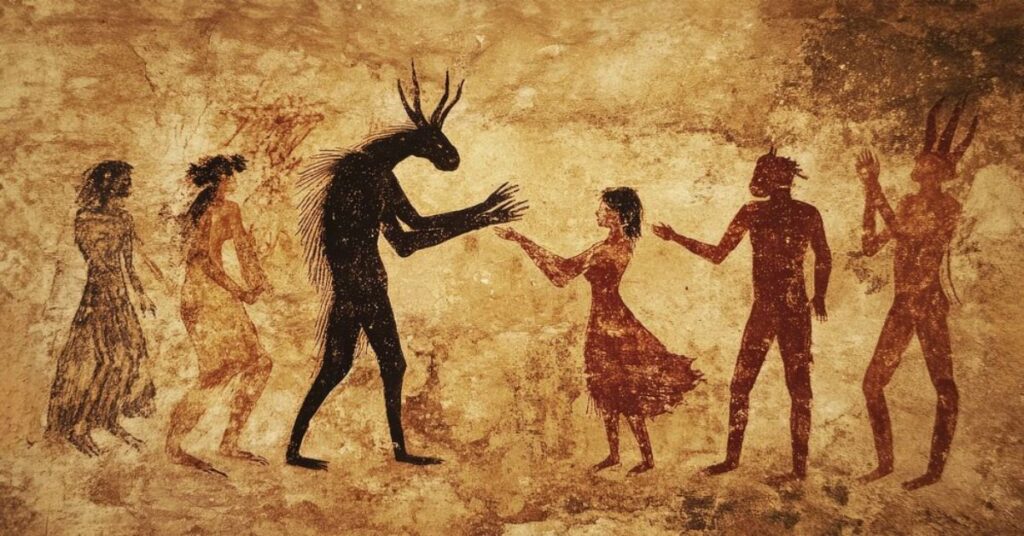Sentenced to Be a Hero Patausche Kivua Art is a fascinating genre that encapsulates the essence of heroism and resilience through a blend of traditional and contemporary techniques. This unique art form, known as “Sentenced to Be a Hero Patausche Kivua Art,” has evolved from ancient storytelling traditions, offering a rich tapestry of visual and narrative experiences that connect generations. In this article, we will explore the origins, evolution, and significance of Patausche Kivua art, while delving into its modern interpretations and the impact it continues to have on contemporary culture.
The Origins of Patausche Kivua Art
Ancient Traditions and Storytelling
The roots of Sentenced to Be a Hero Patausche Kivua Art art lie deep in ancient traditions, where oral storytelling was the primary medium for preserving history, culture, and values. These stories often centered around mythical heroes destined for greatness, embodying virtues such as courage, sacrifice, and perseverance. The art form emerged as a visual representation of these narratives, capturing the essence of heroism through intricate designs, vibrant colors, and symbolic imagery.
The Mythical Hero: A Central Figure
At the heart of Sentenced to Be a Hero Patausche Kivua Art is the mythical hero, a figure “sentenced to be a hero” by fate. This hero’s journey is one of trials, tribulations, and ultimate triumph, resonating with the human experience of overcoming adversity. The art form serves as both a tribute to these legendary figures and a reminder of the enduring qualities that define true heroism.
The Evolution of Patausche Kivua Art
From Oral Tradition to Visual Mastery
As time progressed, the oral traditions that gave birth to Sentenced to Be a Hero Patausche Kivua Art art began to be complemented by visual representations. Early artisans used natural materials like clay, wood, and fabric to create artworks that depicted scenes from these heroic tales. These pieces were often used in rituals, ceremonies, and communal gatherings, serving as both educational tools and objects of reverence.
Incorporating Modern Techniques
In recent years, modern interpretations of Sentenced to Be a Hero Patausche Kivua Art have breathed new life into the ancient narrative. Artists have started to incorporate contemporary techniques such as digital media, street art, and mixed-media collaborations. This fusion of old and new not only preserves the integrity of the original stories but also makes them accessible to a broader audience. The use of digital platforms, in particular, has allowed artists to reach global audiences, ensuring that the legacy of Patausche Kivua art continues to thrive in the digital age.
Collaboration Between Traditional and Modern Artisans
One of the most exciting developments in the evolution of Sentenced to Be a Hero Patausche Kivua Art is the collaboration between traditional artisans and modern creatives. These partnerships have resulted in stunning works that honor the past while pushing the boundaries of what Patausche Kivua art can be. For instance, street artists have taken to the walls of urban spaces, transforming them into canvases for these ancient stories, while digital artists have used technology to create interactive experiences that bring the hero’s journey to life in new and innovative ways.
The Significance of Sentenced to Be a Hero Patausche Kivua Art
Connecting Generations Through Shared Experiences
Sentenced to Be a Hero Patausche Kivua Art art serves as a bridge between generations, connecting people through shared experiences and universal themes. The stories depicted in the art resonate with individuals of all ages, reminding them of the values that have been passed down through the ages. Whether viewed in a traditional setting or through a modern lens, the art form continues to inspire and educate, reinforcing the importance of resilience, courage, and heroism.
A Reflection of Cultural Identity
For many communities, Patausche Kivua art is more than just an artistic expression; it is a reflection of cultural identity. The art form encapsulates the history, beliefs, and values of the people who create and preserve it. By celebrating the mythical hero’s journey, Patausche Kivua art reinforces a sense of pride in one’s heritage and encourages individuals to embrace their cultural roots.
Inspiring Resilience and Heroism
The central theme of “sentenced to be a hero” in Patausche Kivua art serves as a powerful reminder of the resilience and heroism that lies within each of us. The art form challenges viewers to confront their own challenges with the same determination and courage exhibited by the mythical heroes. In this way, Patausche Kivua art not only preserves ancient stories but also serves as a source of inspiration for those facing adversity in their own lives.
Modern Interpretations of Sentenced to Be a Hero Patausche Kivua Art
Digital Mediums and Innovation
The advent of digital technology has opened up new possibilities for Patausche Kivua art. Digital mediums allow artists to experiment with different forms of expression, from digital paintings and animations to interactive installations. These modern interpretations provide a fresh perspective on the ancient narratives, making them relevant to contemporary audiences. For example, some artists have created virtual reality experiences that immerse viewers in the world of the mythical hero, allowing them to experience the hero’s journey firsthand.
Street Art and Public Spaces
Street art has become another popular medium for expressing Sentenced to Be a Hero Patausche Kivua Art. Urban spaces, often characterized by their vibrancy and diversity, provide the perfect backdrop for these heroic tales. By bringing Patausche Kivua art into public spaces, artists are able to engage with a wider audience and introduce the art form to people who may not have encountered it otherwise. This democratization of art ensures that the legacy of Patausche Kivua art remains alive and relevant in the modern world.
Collaborative Works: Traditional Meets Contemporary
Collaborative works between traditional artisans and contemporary artists have resulted in some of the most innovative expressions of Sentenced to Be a Hero Patausche Kivua Art. These collaborations often involve a dialogue between the old and the new, with each artist bringing their unique perspective and expertise to the table. The result is a fusion of styles that honors the past while embracing the future. These collaborative pieces are not only visually stunning but also serve as a testament to the enduring relevance of Patausche Kivua art.
The Legacy of Sentenced to Be a Hero Patausche Kivua Art
Preserving the Art Form for Future Generations
The legacy of Sentenced to Be a Hero Patausche Kivua Art is one of resilience, heroism, and cultural preservation. As artists continue to explore new ways of interpreting and expressing these ancient stories, the art form remains vibrant and relevant for future generations. Efforts to preserve Patausche Kivua art include documenting traditional techniques, creating digital archives, and supporting the work of contemporary artists who are pushing the boundaries of the genre.
Inspiring a New Generation of Artists
Sentenced to Be a Hero Patausche Kivua Art continues to inspire a new generation of artists who are drawn to its rich history and universal themes. These artists are not only preserving the art form but also expanding its reach and impact. By experimenting with new techniques and mediums, they are ensuring that Patausche Kivua art remains a dynamic and evolving genre that speaks to the challenges and triumphs of the human experience.
A Timeless Art Form
Ultimately, Sentenced to Be a Hero Patausche Kivua Art is a timeless expression of the human spirit. Whether depicted in ancient carvings, vibrant street murals, or digital masterpieces, the stories of the mythical heroes resonate with people across time and space. The art form’s ability to adapt and evolve ensures that it will continue to inspire, educate, and connect generations for years to come.
Conclusion
In conclusion, “Sentenced to Be a Hero Patausche Kivua Art” represents a unique and dynamic genre that continues to evolve while staying true to its ancient roots. Through a combination of traditional storytelling, vibrant colors, and modern techniques, this art form inspires resilience and heroism, ensuring its legacy for generations to come.
FAQs
1. What is the main theme of Patausche Kivua art?
The main theme of Patausche Kivua art is heroism and resilience. The art form depicts the journey of mythical heroes who are “sentenced to be a hero,” facing challenges and ultimately triumphing over adversity.
2. How has Patausche Kivua art evolved over time?
Patausche Kivua art has evolved from traditional oral storytelling and visual representations to include modern techniques such as digital media, street art, and collaborations between traditional artisans and contemporary artists.
3. What role does collaboration play in Patausche Kivua art?
Collaboration plays a significant role in Patausche Kivua art, particularly in modern interpretations. Traditional artisans and contemporary artists often work together to create innovative pieces that honor the past while embracing new techniques and perspectives.
4. How does Patausche Kivua art connect with modern audiences?
Patausche Kivua art connects with modern audiences through its universal themes of heroism and resilience. The use of digital mediums, street art, and public spaces also makes the art form accessible to a broader audience, ensuring its continued relevance.
5. Why is Patausche Kivua art important for cultural preservation?
Patausche Kivua art is important for cultural preservation because it encapsulates the history, beliefs, and values of the communities that create and maintain it. By preserving and evolving this art form, future generations can connect with their heritage and draw inspiration from the stories of the past.







